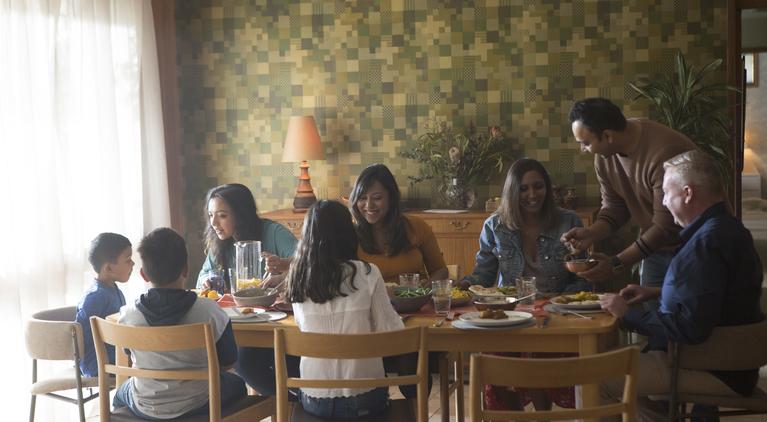EnergyAustralia’s new headquarters at Two Melbourne Quarter, in the heart of the Victorian capital, boasts the latest technology and sustainable, cutting-edge design. But it isn’t all about the new and futuristic. The office also respects the past and present of the traditional land it occupies and its Traditional Owners, the Wurundjeri Woi-Wurrung peoples of the Kullin nation.
EnergyAustralia’s main reception area, on level 19, features the embossed word Wominjeka, or “Welcome” in the Wurundjeri and Dja Dja Wurrung languages of Melbourne and central Victoria. Meeting rooms have Wurundjeri Woi-Wurrung language names and digital resources showing Traditional Owners explaining its pronunciation and meaning.
But the centrepiece is the artwork, Wominjeka Wurundjeri-al Biik-u (Welcome to Wurundjeri Country), on the office’s hub floor.
The work represents the six layers of Wurundjeri country: Dharangalk Biik (Cosmos), Wurru wurru Biik (Sky Country), Murnmut Biik (Wind Country), Baanj Biik (Water Country), Biik-dui (On Country), and Biik-ut (Below Country), says artist Mandy Nicholson, a Wurundjeri, Dja Dja Wurrung and Ngurai Illam Wurrung woman.
“Another way to keep our culture alive is through art and raising the awareness that our connection to country has never faded,”says Mandy.
Vision for reconciliation
Conducting consultation with Traditional Owners early in the design process of its headquarters meant that the outcome is an interior that has culture in the forefront for all to see and learn from, says community relations leader Bianca Graham.
“It was the right thing to do to speak with Traditional Owners in the very early stages of this project and explain our plans, and for us to listen to Traditional Owners on their own culture, stories and aspirations,” says Bianca. “The outcome you see today is mutual agreement on how we recognise and show respect to their culture and continue their work in keeping it alive by incorporating it into the way we work.”
Karen Mancuso, project coordinator at 2MQ, says the consultation process has been rewarding for everyone involved.
“The process has been very informative and easy,” says Karen “The Aunties we consulted with – Aunty Gail Smith and Aunty Julianne Axford – are very knowledgeable and passionate about their heritage. The storytelling that’s been shared for many years is beautiful to listen to.
“This is the first time I’ve done anything like this and I’ve learnt a lot about local Aboriginal culture and heritage.”
All part of the Reconciliation Action Plan
EnergyAustralia adopted a Reconciliation Action Plan (RAP) in 2016 as part of its diversity and inclusion commitment to recognise and respect Australia’s Aboriginal and Torres Strait Islander people, communities and cultures.
Graham says the RAP is about supporting organisations to develop respectful relationships and create meaningful opportunities for First Nations peoples.
“Our vision for reconciliation is that we are a nation of unity and fairness for all, a nation that owns its history and acknowledges its First Nations peoples, their resilience and their living culture,” she says.
“Our goal is to build working relationships with Aboriginal and Torres Strait Islander peoples and communities more broadly. Through reconciliation we live our value of doing the right thing and lead change




